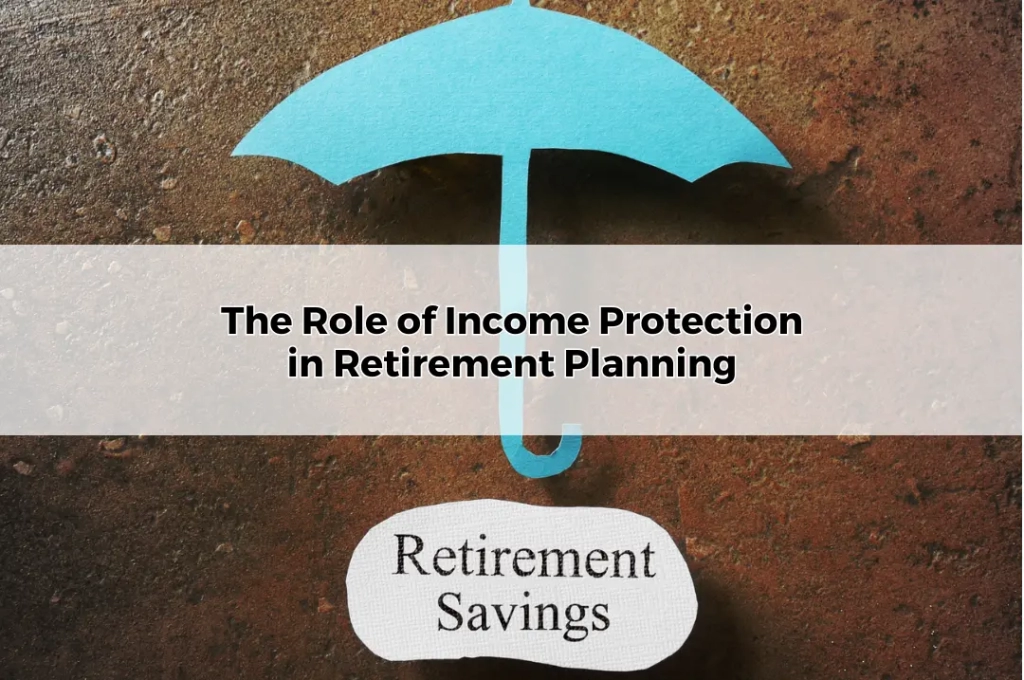The Role of Income Protection in Retirement Planning
Table of Contents
ToggleRetirement planning is a critical aspect of securing your financial future, requiring careful consideration of various elements that contribute to long-term stability. While superannuation and investments are often the focus, income protection insurance plays a pivotal role in safeguarding your financial well-being, particularly in the years leading up to retirement. This blog post explores the significance of income protection insurance within the context of retirement planning, highlighting how it can ensure financial continuity and peace of mind.
What is Income Protection Insurance?
Income protection insurance is a type of policy designed to replace a portion of your income if you are unable to work due to illness or injury. Typically covering up to 75% of your pre-tax income, income protection provides regular payments during your recovery period, helping you meet ongoing financial commitments without depleting your savings. This insurance is particularly valuable as it ensures that you can maintain your lifestyle and continue saving for retirement, even when unforeseen events disrupt your earning capacity.
The Importance of Income Protection in Pre-Retirement Years
The years leading up to retirement are crucial for building your superannuation and other savings. Income protection becomes especially important during this time, as it safeguards your income against unexpected setbacks. An illness or injury that forces you out of the workforce could have a significant impact on your ability to contribute to your retirement savings. Income protection mitigates this risk, providing a financial buffer that allows you to focus on recovery without worrying about the long-term implications for your retirement.
Income Protection vs. Other Forms of Insurance
While life insurance and total and permanent disability (TPD) insurance are essential components of a robust financial plan, income protection serves a unique purpose. Life insurance provides a lump sum to beneficiaries in the event of death, and TPD insurance covers you if you become permanently disabled. In contrast, income protection is designed to replace your income during temporary periods of incapacity. This ongoing financial support is crucial for maintaining your savings trajectory and avoiding the need to dip into retirement funds prematurely.
How Income Protection Supports Long-Term Financial Goals
One of the key benefits of income protection is its role in supporting your long-term financial goals. By ensuring that you continue to receive an income during periods of illness or injury, income protection helps you maintain your superannuation contributions and other savings strategies. This continuity is vital for achieving the retirement lifestyle you’ve planned for. Without income protection, you might be forced to pause or reduce contributions, potentially jeopardising your financial security in retirement.
Integrating Income Protection into a Comprehensive Retirement Plan
A comprehensive retirement plan should incorporate income protection as part of a balanced financial strategy. This integration ensures that all potential risks to your income and savings are covered, allowing you to focus on growing your wealth with confidence. Aligning your income protection coverage with your retirement objectives means selecting a policy that provides sufficient income replacement for the duration you need, ensuring that your financial plan remains on track, even in the face of adversity.
Understanding the Cost of Income Protection
While income protection offers significant benefits, it’s important to consider the cost of premiums and their impact on your overall financial plan. Premiums are typically influenced by factors such as your age, occupation, and the level of coverage selected. Balancing your coverage needs with affordability is essential to ensure that your income protection policy provides adequate support without detracting from your ability to save for retirement. Understanding the cost-benefit ratio of income protection helps you make informed decisions that align with your financial goals.
Tax Advantages of Income Protection Insurance
One of the attractive features of income protection insurance is the tax deductibility of premiums. In Australia, premiums for income protection policies held outside of superannuation are generally tax-deductible, reducing the overall cost of maintaining the policy. Additionally, the benefits received from an income protection policy are taxed as regular income, which may be advantageous depending on your tax situation. These tax considerations can make income protection an even more valuable component of your retirement planning strategy.
The Impact of Income Protection on Superannuation
Income protection also plays a crucial role in safeguarding your superannuation. By providing a steady income during periods of incapacity, it helps you avoid withdrawing from your superannuation early, which could have detrimental effects on your long-term retirement savings. Continued contributions to superannuation during these periods ensure that your retirement nest egg continues to grow, preserving the benefits of compound interest and maintaining your retirement plan’s integrity.
Choosing the Right Income Protection Policy
Selecting the right income protection policy requires careful consideration of several factors, including the waiting period, benefit period, and level of coverage. The waiting period is the time between when you become unable to work and when the benefits begin, while the benefit period is the maximum time the policy will pay out. Customising these aspects of your policy to fit your retirement plan is crucial for ensuring that you have the protection you need, when you need it, without overpaying for unnecessary coverage.
Common Mistakes to Avoid with Income Protection
When considering income protection, it’s important to avoid common pitfalls such as underestimating the amount of coverage needed or overlooking policy exclusions and limitations. Ensuring that your policy covers all potential risks and aligns with your financial situation is essential for avoiding gaps in coverage. Regularly reviewing your income protection policy as part of your overall financial plan can help you stay on track and ensure that your insurance continues to meet your needs as you approach retirement.
The Role of a Financial Adviser in Income Protection
Working with a Toowoomba Financial Adviser can provide invaluable guidance in selecting and managing your income protection policy. A financial adviser can help you assess your coverage needs, compare different policies, and integrate income protection into your broader retirement plan. Regular consultations with your adviser will ensure that your income protection strategy remains aligned with your evolving financial goals, providing peace of mind and financial security as you approach retirement.
In conclusion, income protection is a vital component of any comprehensive retirement plan. By safeguarding your income during your working years, it ensures that you can continue to build your retirement savings and achieve your financial goals, even in the face of unexpected challenges. For those in Toowoomba, consulting with a knowledgeable financial adviser is the best way to integrate income protection into your retirement strategy and secure your financial future.









